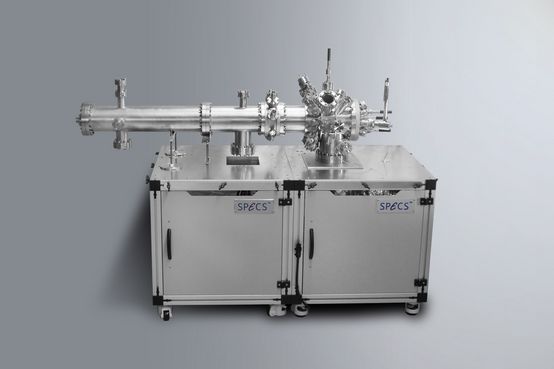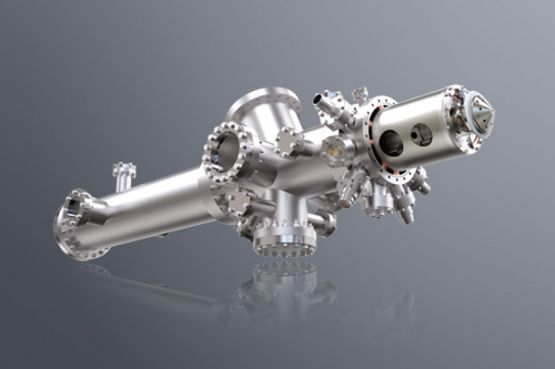Interlayer excitons (ILXs) — electron–hole pairs bound across two atomically thin layered semiconductors — have emerged as attractive platforms to study exciton condensation, single-photon emission and other quantum information applications. Yet, despite extensive optical spectroscopic investigations, critical information about their size, valley configuration and the influence of the moiré potential remains unknown. Here, in a WSe2/MoS2 heterostructure, we captured images of the time-resolved and momentum-resolved distribution of both of the particles that bind to form the ILX: the electron and the hole. We thereby obtain a direct measurement of both the ILX diameter of around 5.2 nm, comparable with the moiré-unit-cell length of 6.1 nm, and the localization of its centre of mass. Surprisingly, this large ILX is found pinned to a region of only 1.8 nm diameter within the moiré cell, smaller than the size of the exciton itself. This high degree of localization of the ILX is backed by Bethe–Salpeter equation calculations and demonstrates that the ILX can be localized within small moiré unit cells. Unlike large moiré cells, these are uniform over large regions, allowing the formation of extended arrays of localized excitations for quantum technology.
Ouri Karni, Elyse Barré, Vivek Pareek, Johnathan D. Georgaras, Michael K. L. Man, Chakradhar Sahoo, David R. Bacon, Xing Zhu, Henrique B. Ribeiro, Aidan L. O’Beirne, Jenny Hu, Abdullah Al-Mahboob, Mohamed M. M. Abdelrasoul, Nicholas S. Chan, Arka Karmakar
Nature 603, pages 247–252 (2022)
 Detail
Detail
